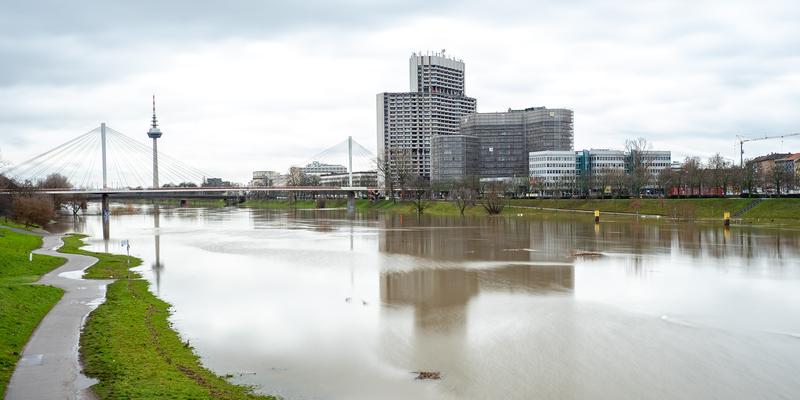With the International Day for Disaster Risk Reduction on October 13, the United Nations reminds us of the importance of preventing disasters or reducing their negative effects. It is a concern that the more than 90 scientists at the LOEWE center emergenCITY also have in mind. To mark the occasion, emergenCITY is briefly presenting two current research projects on the historical perception and management of flood events and resilience of water distribution systems.
Nadja Thiessen, research associate at emergenCITY in the Program Area City and Society, is involved in historical disaster research. She has looked at floods and heavy rainfall events in various cities in the past and recorded how floods were perceived in history and what strategies people developed in the 19th and 20th centuries to protect themselves. Last year, her book „Gefährdung städtischer Infrastruktur durch Hochwasser. Wahrnehmungen und Bewältigungsstrategien in Mannheim und Dresden 1918–1989“ was published last year in the series on historical disaster research by DeGruyter.
Using historical flood knowledge for the future
She is currently working on an essay on the effects of the expansion of the Rhine using barrages on the flood situation in Mannheim. She is also researching heavy rainfall events in Berlin in the 19th and 20th centuries together with scientists from the Disaster Research Unit at Freie Universität Berlin. At the symposium “Wasser als öffentliche Angelege - Water Literacy” from October 9 to 11, funded by the Volkswagen Foundation, she presented historical flood knowledge in a lecture.
“My aim is to create awareness for future situations by referring to past events,” Nadja Thiessen says. “Wherever water has been, it can come again - and the climate crisis will intensify this. We should consider all the information we can find about historical floods when developing prevention, protection and risk concepts and not only rely on the reliable but far too short time series from the water level measuring stations or the heavy rainfall database.”
Resilience of urban water supply systems
Kevin Logan and Michaela Leštáková, research associates in the emergenCITY Program Area Cyber-Physical Systems, are investigating how urban water distribution systems can continue to function safely in extreme situations such as droughts and heavy rainfall events.
The urban water distribution is a large technical system and exhibits characteristics of complex systems. In their research, the two scientists are investigating which structural features of the distribution network contribute to ensuring security of supply even in the event of danger, critical events and damage. To do this, they analyze and optimize existing networks. They then expose the systems with adapted distribution networks to hazards and critical events in simulations in order to subsequently assess how resilient they are.
Learning from disruptions
Adaptability is a key characteristic of resilient systems. “This is why we are developing controllers that can identify disruptions and adapt their target values to changing external circumstances,” Kevin Logan explains. “Using machine learning methods, these controllers can learn from past disturbances and adapt their response accordingly, as well as anticipate future disturbances. These controllers are experimentally validated on a bespoke test rig.”
“What sets us apart is the awareness that an urban water distribution system is always a socio-technical system. That’s why we use multi-agent simulations to look at the interaction of people with the technical water distribution system in order to quantify the contribution of consumers to the resilience of the distribution system,” Kevin Logan adds.
More about the scientists and their research:
International Day for Disaster Risk Reduction
This year, the focus of the United Nations’ International Day for Disaster Risk Reduction lies on the youngest generation. The aim is to strengthen children for a resilient future. Because more and more disasters are threatening the wellbeing of children and young people. In 2022, for example, the number of children affected by flooding in Chad, Gambia, Pakistan and Bangladesh was the highest in over 30 years. Children should therefore also be involved in disaster risk reduction.
Find out more on: https://iddrr.undrr.org/



